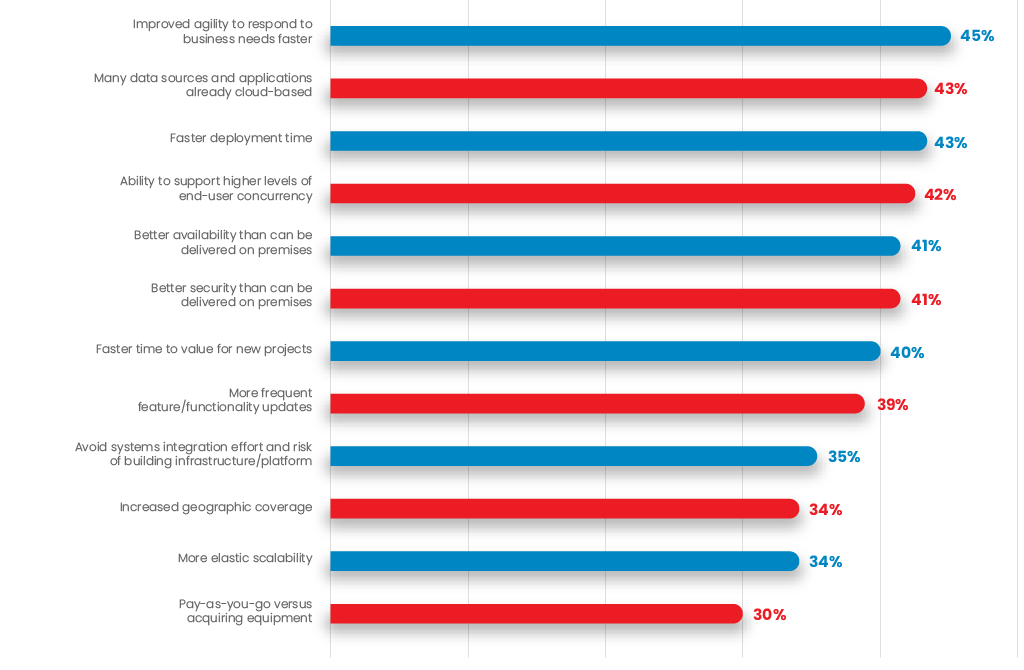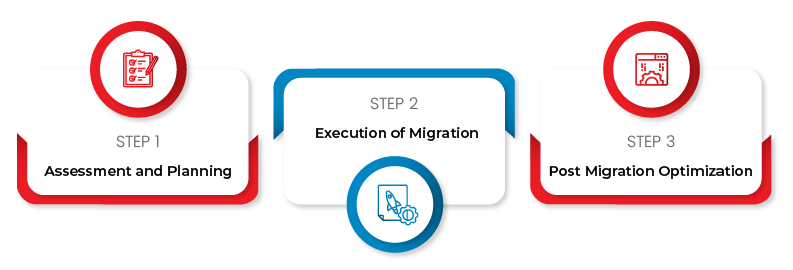In the evolving landscape of IT infrastructure, migrating from on-premises setups to cloud-based solutions is becoming increasingly essential for businesses seeking scalability, efficiency, and cost-effectiveness. As cloud environments become more robust, secure, and scalable, providing the ability to scale up with a moment’s notice, it is becoming almost a requirement for most modern organizations to migrate to the cloud.
Why Companies Migrated from On-Premises Setup to AWS?
Some of the key reasons why a company would consider migrating from on-premises to AWS Cloud Service provider include:
Scalability
It can be a major hassle to change the requirements in an on-premises center, both from the technical and financial aspects. A simple change in architecture may require months of deliberation from stakeholders and financial leaders. With AWS, however, a change in an instance type (be it going from a small test instance to a powerful, expensive machine) can be as quick as a couple of seconds, with the change executed in under a minute. And the best part is that the change is as easily reversible as it was to execute. This financial aspect allows faster business decisions without a major cost headache.
Cost-Efficiency
Pay-as-you-go models reduce upfront hardware costs and offer operational expense management. This allows engineers and product owners to quickly bring up instances for proof of concepts, development testing, and bulk processes, run the execution steps, and bring the resources down, rather than wait for finance to authorize approval for something that will only be used for a short period of time.
Innovation and Agility
Quick deployment of resources accelerates innovation cycles, enabling businesses to respond rapidly to market changes. It frees developers to do what they do best, provide value to end customers, and have those changes brought to production immediately.
Enhanced Security
Benefit from the robust security protocols of cloud providers. AWS takes pride in the “Shared Responsibility model”. Customers are only responsible for the security of their product (code, users, and network), while AWS takes care of the security of the cloud, providing secure infrastructure, encrypted networks, compliant data warehouses, and bulletproof AWS-managed services.
Global Reach
Cloud platforms offer global distribution capabilities, ensuring better performance for geographically dispersed users. AWS has data centers in all corners of the globe, and provisioning infrastructure in one part of the world can be accomplished within a couple of minutes without significant costs associated. This is a feat that cannot be replicated with traditional geographical data centers.
The AWS itself provides data on the economic advantages of migrating to the AWS cloud infrastructure in the economic validation report of 2023. Some of the data is given below:

45%
Lower Time to Market
for New Features
Up to 66%
Infrastructure Cost Savings
Up to 77%
Reduction in
Licenses Required
How to Kickstart Your Cloud Migrations?
The successful journey of cloud migrations starts with careful and strategic planning. In the following section, we’ll explore the necessary steps and key insights to kickstart your cloud migration journey.

1. Assessment and Planning
Well, it starts with a lot of careful assessment and strategic planning. Key stakeholders will assess the existing infrastructure, decide which parts of the application or resources are a perfect fit for migration to the cloud, how disruptive the migration would be, and identify key objectives and outcomes.
Selection of Optimal Service Provider
One of the key parts of the assessment phase is choosing the right service provider, one who not only aligns with your technical goals but also with the company’s values and business objectives, as well as a partner that can provide you substantial support, whether technical or financial, in your cloud migration. AWS has a robust migration strategy, employing multiple migration Competency certified partners to assist in clients’ migration endeavors. They also have migration funding programs that make it easy to shift to the cloud.
Migration Readiness and Planning
AWS offers tools like the AWS Migration Hub for centralized tracking and the AWS Application Discovery Service for understanding dependencies. AWS assists in the migration readiness and planning phase with the client, helping them identify and educate about the options in the cloud.
2. Execution of Migration
AWS will help the client engage with the execution of the migration. This can involve multiple approaches, whether done in steps or phases (AWS offers a proof-of-concept migration where certain parts of the infrastructure will be migrated initially, giving the customer a chance to see the environment operational in the cloud before the entire on-premise center is migrated). AWS Migration partners assist every step of the way, using both DevOps and technical resources as well as AWS-managed migration services such as the AWS Database Migration service to streamline the migration process.
3. Post Migration Optimization
Along with the migration, one of the major parts is optimizing post-migration. AWS leverages cutting-edge technologies, and most AWS instance types will provide better performance than your average on-premise VM or hardware. Also, most hardware is overprovisioned to compensate for peaks, while AWS champions pay as you use and use scaling. AWS will work with their engineers to find a perfect fit of cost vs. performance with auto-scaling enabled to handle the peaks and spikes in usage, allowing the customer to experience significant cost savings (Eurus Technologies has routinely seen around 30% of cost savings in the migrations for its customers over the past year!!).
Migrating from on-premises to the cloud is not just a technological upgrade; it’s a strategic move towards future-proofing your business. AWS stands out as a comprehensive partner for this transition, offering robust tools, support, and services to ensure a smooth and beneficial migration experience. AWS employs multiple competent technology and Service provider partners that can assist in all aspects of cloud migration, and their multitude of offerings, such as the AWS Migration Acceleration Program (MAP), AWS Proof of Concept Migration (PoC), and AWS Professional Services, which offers AWS partner resources as a standby to help with technical or hands-on requests, help clients feel at ease as they embark on the journey to cloud migration.
Does it seem like a big hustle for you? Trust Eurus Technologies to make your cloud journey easier, more efficient, and tailored to your needs with robust cloud solutions and other top-notch services.

